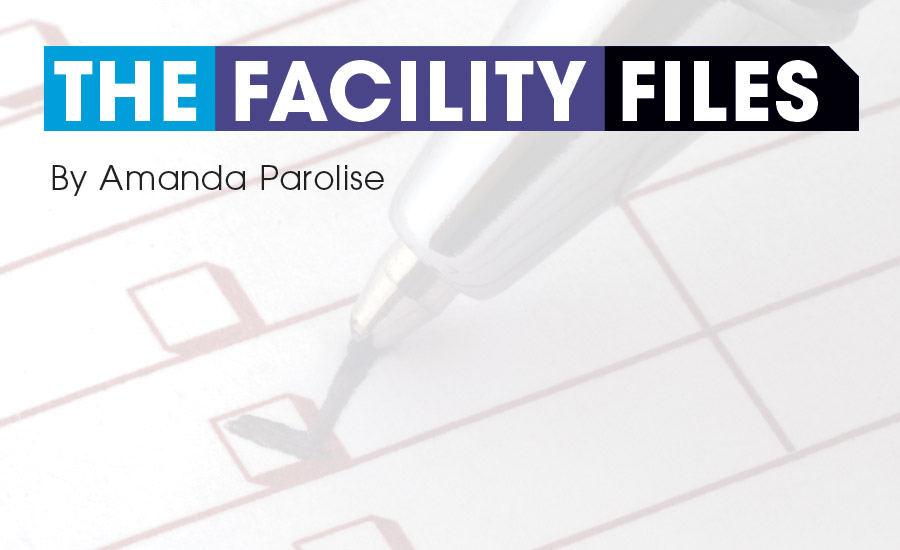This month’s Facility File will focus on the B2B June test for a heating application on a college campus, with a building program removing a dormitory heating system from the campus high-pressure steam system and replacing it with a high-efficiency condensing hot water boiler within the dormitory. The project delivery method is integrated project delivery (IPD).
As a rule, college and university support services are very knowledgeable about the heating infrastructure that is required to assure the buildings are heated. Still, it would be very beneficial for these individuals, along with the rest of the IPD team, to read 2015 ASHRAE Handbook — Applications, chapter 7 (Educational Facilities), to refresh their knowledge of ASHRAE’s guidelines when preparing to renovate a dormitory building heating plant, as well as chapters 36 through 43 pertaining to Building Operation and Management. To select the optimum boiler equipment for the application, the team is directed to 2016 ASHRAE Handbook — chapter 32 on Boilers.
The IPD team includes the campus construction operations manager, a project manager from the school’s construction department, O&M department manager, and an owner representative who will also provide 3rd-party commissioning and air and water-balancing (Cx/TAB). The design team is an engineer-architectural contract with the HVAC consultant engineer as the team leader; architect; electrical, plumbing, and structural consultants; acoustic consultant; and security subconsultants. An experienced general contractor and the HVAC, electrical, and plumbing subcontractors make up the rest of the IPD team.
With all these design guidelines from ASHRAE, the IPD team will meet with the college’s O&M staff to discuss specific building standards that need to be applied to this project. For this project, the facility operation is an in-house staff and not an outsourced group, and they will want to be assured there are adequate contract specification requirements that include pertinent O&M, training, preventive maintenance workorder system, and energy operating budget.
In the Phase 3 Concept Development of the IPD project, the campus operations manager and her O&M staff will want to contribute information to the design team member’s writing of the contract specification and, more specifically, to the following activities: service contracts, parts inventory, and as-built drawings requirements. Reviewing the design documents this O&M staff will want to be assured that equipment serviceability is adequate and safe.
For this June B2B IPD test, the team will work closely together with the owner-designer-builder based on a building program construction budget so the general contractor and his in-house engineering and estimator (along with the prime subcontractors involved in the design phase) will be able to contribute collectively to the contract documents. In the construction phase, the O&M staff will want to revisit the issues noted during the design phase. Next comes the startup and commissioning phases, and the O&M staff will want to be proactive in following along with the IPD team’s mechanical-electrical in-house coordinator and the subcontractor’s startup personnel and receive equipment training from the boiler startup technician and system training using the O&M manuals and contract drawings (that will eventually become the as-built drawings).
Once the startup has been completed, the HVAC subcontractor shall go through an automatic control system initial dry-run demonstration prior to the IPD/general contractor and his subcontractors demonstrating the system to the Cx/TAB consultant. The ATC subcontractor should also begin collecting system performance by trending pertinent building, hot water, and boiler system and equipment data by trending the following:
[X] room dry bulb temperatures [X] hot water supply and return temperatures [X] individual boiler hot water supply and return temperatures [X] alarms [X] boiler control points [X] campus BAS points and trends [X] offsite boiler manufacturer’s interface.
Taking the same approach as the design engineer, the owner’s O&M personnel should use a series of computer-generated touchscreen project checklists that allows her staff to confirm that the following facility files have been collected. This process should start at the beginning of construction and not at project closeout, so that the facility files can be inputted into a CMMS system. Touchscreen O&M checklists should include:
[X] equipment shop drawings [X] O&M manuals, parts list, and lubricants [X] troubleshooting tips [X] remote monitoring instructions.
The O&M staff should review the contractor-produced piping field fabrication/field coordination drawings prior to fabrication. Touchscreen service checklists should include:
[X] location of shutoff valves, ATC valves and balancing valves [X] strainers [X] equipment and control devices [X] access for servicing equipment.
The training process should include specific boiler heating system and equipment training but also emergency response plans training due to security concerns (e.g., internet access).
The college’s hydraulic modeling of the entire system will be updated after the final TAB report. This will requires the TAB subcontractor to provide the water balancing reports along with the associated system flow diagrams, noting quantities and pressures for rebalancing if necessary as part of the project closeout documents. Touchscreen training checklists should include:
[X] equipment [X] system [X] emergency plan [X] automatic controls [X] energy management and trending.





